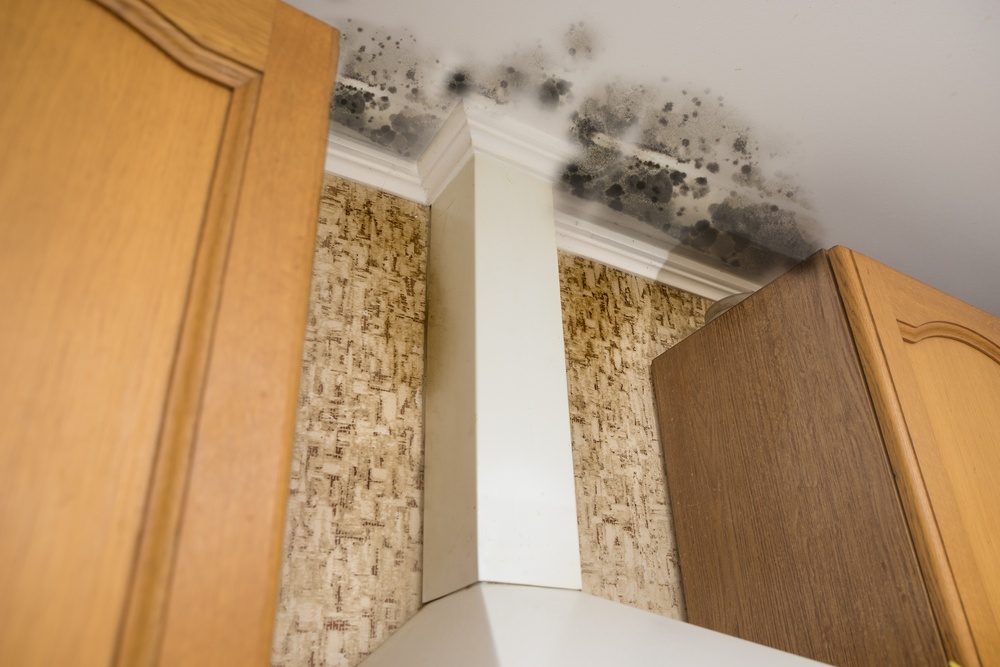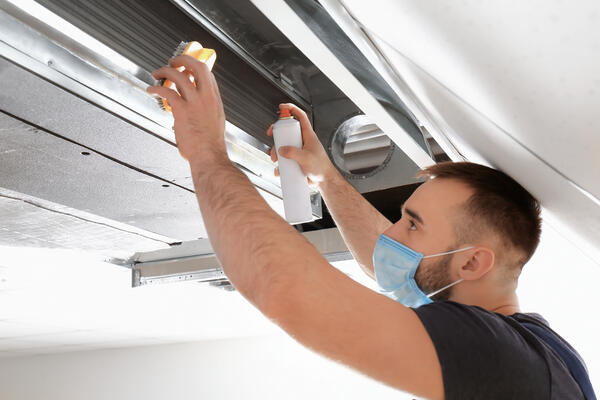Using Mechanical Engineering to Prevent Mold

Mold can cause several problems in building interiors if allowed to grow without control, including health issues and material damage. Mold patches are evident when they grow in exposed locations, but those hidden from sight can stay undetected until a large area is covered. Small patches of mold can normally be cleaned by maintenance personnel, but larger infestations require professional mold remediation services.
Mold issues are more severe when part of a building has been flooded due to extreme weather, since mold thrives in humid environments. Mold and moisture damage are very difficult to prevent after a flood, but their impact can be minimized by removing contaminated materials as soon as possible.
Mold produces both allergens and irritants. An allergen is a substance that only affects individuals who are susceptible to it, while an irritant affects everyone regardless. Asthma patients should be especially careful to avoid mold exposure, since it can trigger flare-ups.
Control your indoor air humidity and prevent mold issues.
Preventing Mold with Air Dehumidification
Completely removing mold and its spores from indoor spaces is nearly impossible, especially when you consider that microscopic spores spread through the air. Simply cleaning mold does not solve the problem, since mold will grow elsewhere from propagated spores.
However, mold has one key weakness: it can only survive in humid environments, and dies off when the moisture content of the air is lowered.
- One of the best strategies to fight mold is keeping relative humidity below 60%, as recommended by ASHRAE and the US EPA.
- Just consider that the air must not be dehumidified excessively; going below 30% relatively humidity is not recommended.
A mechanical engineering firm can determine if your indoor air has an adequate level of relative humidity, and design a suitable dehumidification system if necessary. When air conditioning systems have an adequate capacity according to the indoor space they serve, they can often achieve humidity control without an additional dehumidifier. Excessive humidity is a common issue caused by oversized air conditioners.
Humidity control can kill mold, but finding and removing it is still important - dead spores and mold particles also cause irritation and allergies. However, if humidity problems are fixed before cleaning mold, it will not grow back.
When Can Mold Be Cleaned Effectively?
Mold can normally be cleaned effectively from smooth surfaces, but porous materials may need to be discarded. If mold affects an air duct system, for example, sheet metal components can be cleaned but insulation must be replaced. Wet furniture and carpets are also very susceptible to mold damage, due to their porous nature.

Large-scale mold infestation requires professional remediation services, since it has the potential to release a huge volume of spores into the air when disturbed. Large patches of mold are normally isolated from the rest of the building during the cleaning process to contain spores, and the personnel doing the job is equipped with protective gear.
Preventing mold in air handlers and ductwork is especially important, since these systems distribute air for many indoor spaces. If these components are affected by mold, you will soon notice patches in many other places because the ventilation system is distributing spores. To prevent hidden mold growth, get your HVAC installations inspected by professional mechanical engineers at regular intervals.
If you have noticed an increase in allergies and health issues among building occupants, the cause could be a large patch of mold hidden from sight. However, getting laboratory tests is very important - accumulated dirt and other types of debris sometimes resemble mold, but they can be cleaned much more easily because there is no release of spores and other noxious substances.

Keith Fink
Keith is the Franchise Brand Manager at NY Engineers, Keith is all things related to our project portfolio, brands and all things you need to know before we start your project.
Join 15,000+ Fellow Architects and Contractors
Get expert engineering tips straight to your inbox. Subscribe to the NY Engineers Blog below.


